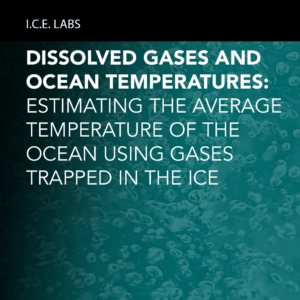Article Abstract
Acetylene is a short‐lived trace gas produced during combustion of fossil fuels, biomass, and biofuels. Biomass burning is likely the only major source of acetylene in the preindustrial atmosphere, making ice core acetylene a powerful tool for reconstructing paleofire emissions. Here we present a 2,000‐year atmospheric record of acetylene reconstructed from analysis of air bubbles trapped in Greenland and Antarctic ice cores and infer pyrogenic acetylene emissions using a chemistry transport model. From 0 to 1500 CE, Antarctic acetylene averages 36 1 pmol mol−1 (mean 1 SE), roughly double the annual mean over Antarctica today. Antarctic acetylene declines during the Little Ice Age by over 50% to 17 +/- 2 pmol mol−1 from 1650 to 1750 CE. Acetylene over Greenland declines less dramatically over the same period. Modeling results suggest that pyrogenic acetylene emissions during 1000–1500 CE were sustained at rates significantly greater than modern day and declined by over 50% during the 1650–1750 CE period.
What we know: Scientists can measure the content of gas bubbles in ice cores to learn about past changes in the atmosphere. Acetylene is a gas found in very low concentrations but can serve as a fingerprint of wildfires for thousands of years into the past.
Why it’s important: It is essential to understand the relationship between wildfires, climate, plants and human activities in the past, because of the rapid, and often dangerous, changes occurring today.
How the research was done: In this project, the authors measure acetylene in ice cores from both Greenland and Antarctica during the last 2000 years.
What the evidence shows: The results show that during the Medieval Period (between the years of 1000 to 1500), wildfires were more far more active than what we experience today.




